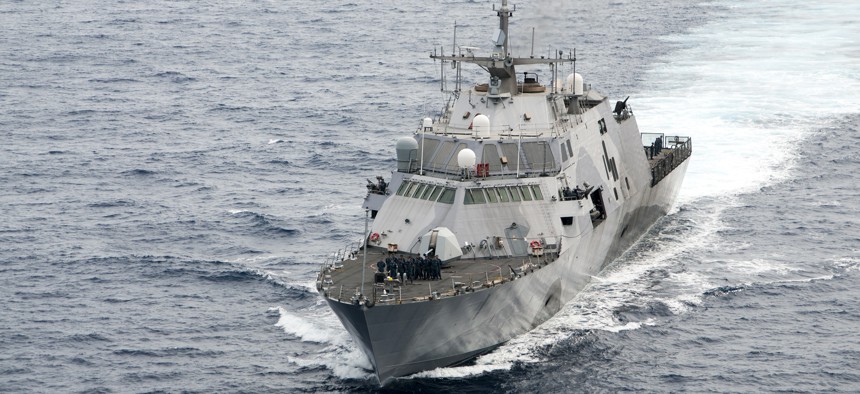
Saudi Arabia plans to buy a more powerful version of U.S. Navy's Freedom Class Littoral Combat Ship. Mass Communication Specialist 3rd Class Johans Chavarro/U.S. Navy
Saudi Arabia Eyes US Warships, Sub-Hunting Helicopters to Check Iran
Saudi Arabia is planning to buy four more powerful versions of the U.S. Navy’s Littoral Combat Ships, 10 submarine hunting Seahawk helicopters, and 750 missiles, freeing up U.S. forces in the Persian Gulf.
Saudi Arabia is close to buying new U.S. warships and helicopters so that they can hunt submarines and ships in the Persian Gulf directly from Iran.
The deal, which U.S. officials said would free up U.S. forces performing those tasks in the Gulf, could be worth upwards of $13 billion and also includes more than 700 hundred missiles.
“A modernized Saudi naval force will be better able to handle a wider range of security tasks that would otherwise fall to U.S. and coalition forces in the region, allowing greater flexibility to address emerging security challenges in the Central Command Area of Operations, as needed,” a State Department official said.
The ships are larger, beefed up versions of the U.S. Navy’s Freedom Class Littoral Combat Ships. Unlike the U.S. Navy ships, the Saudi version, called Multi-Mission Surface Combatant, will include missile launchers that can fire a mix of weapons.
“These vessels represent a generational upgrade to Saudi naval capabilities and will mark the first major export of a newly built U.S.-manufactured surface naval vessel in years,” the State Department official said.
The ships are made by Marinette Marine in Wisconsin, and Lockheed Martin is the lead contractor for the project. The State Department approved a sale that could include 532 tactical RIM-162 Evolved Sea Sparrow surface-to-air missiles, 188 RIM 116C Block II Rolling Airframe Missiles, and 48 RGM-84 Harpoon Block II anti-ship missiles. The sale could be worth more than $11 billion, according to the Pentagon.
Earlier this year, State approved the $1.9 billion sale of 10 MH-60R Sea Hawk helicopters. Sikorsky and Lockheed build the aircraft in Connecticut and upstate New York.
U.S. officials long have expected an increase in American arms sales to Persian Gulf allies as a price for the Iran nuclear deal and loosening restrictions on Tehran.
“Saudi Arabia faces a persistent threat to its maritime infrastructure and sea lines of communication,” the State official said. “This naval modernization effort will improve Saudi Arabia’s capabilities to provide for its self-defense in a manner that will promote interoperability with the United States through the use of standardized communication, systems and platforms.”
NEXT STORY: What If Canada Doesn’t Buy the F-35?





